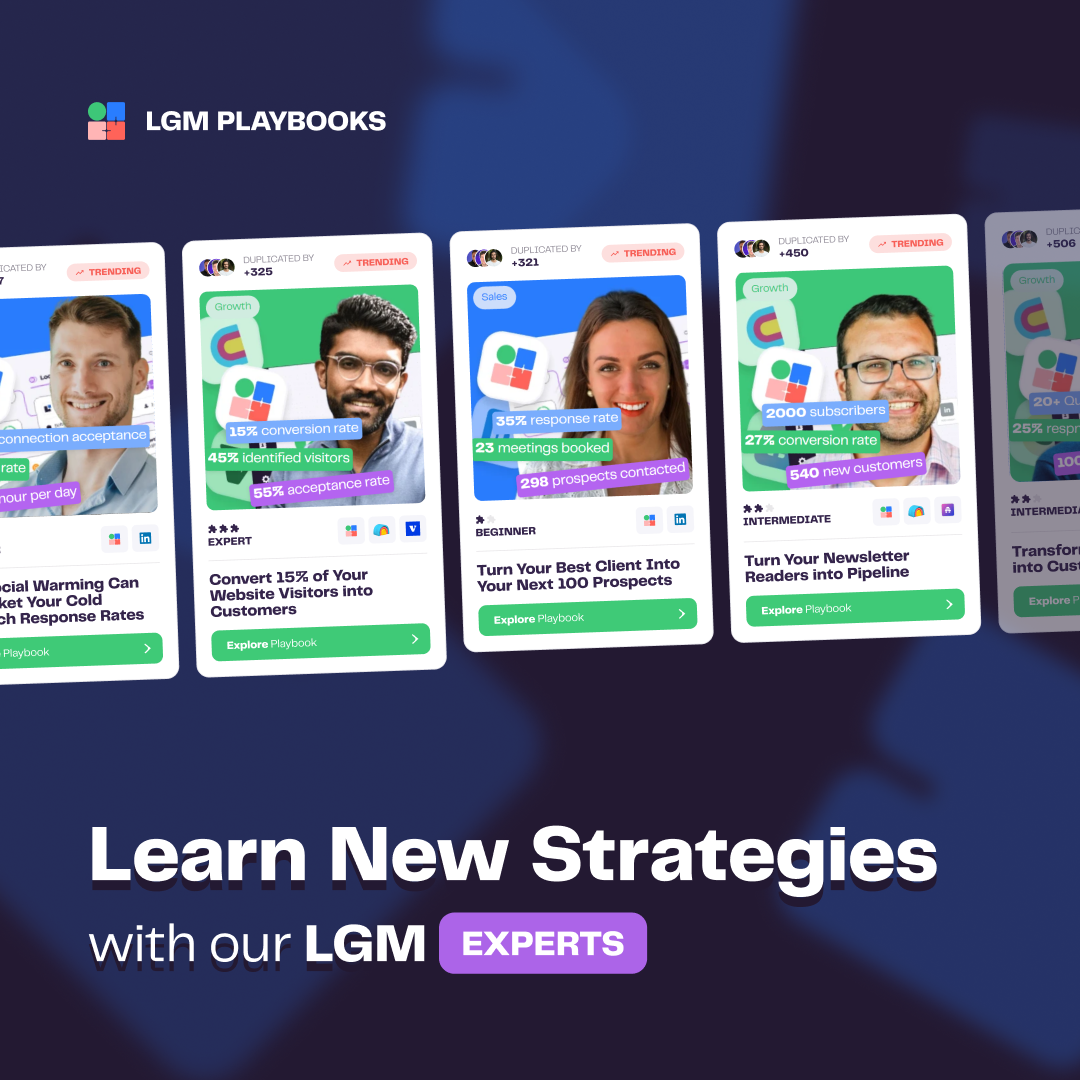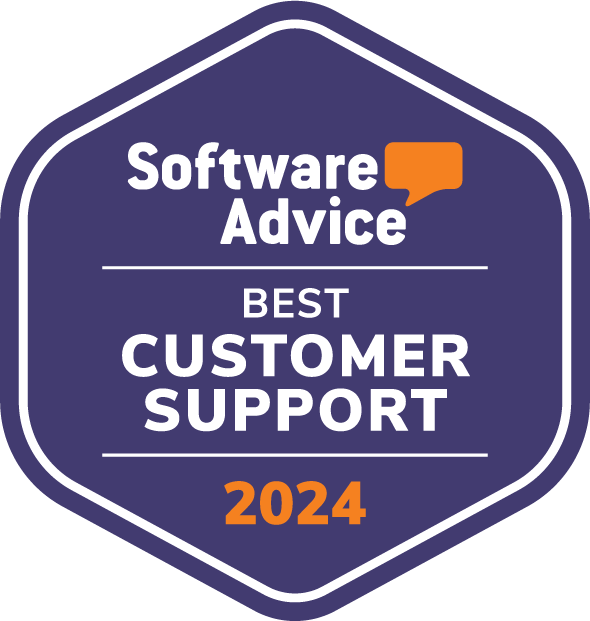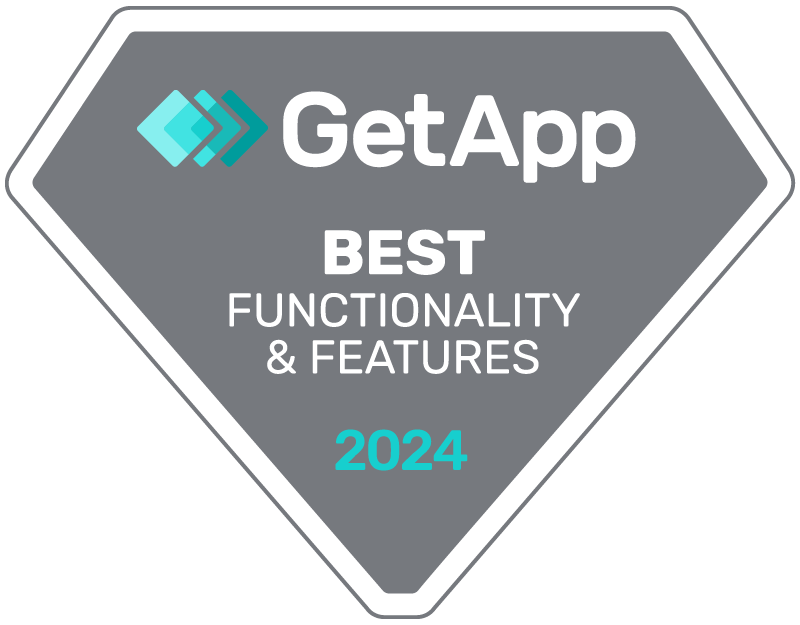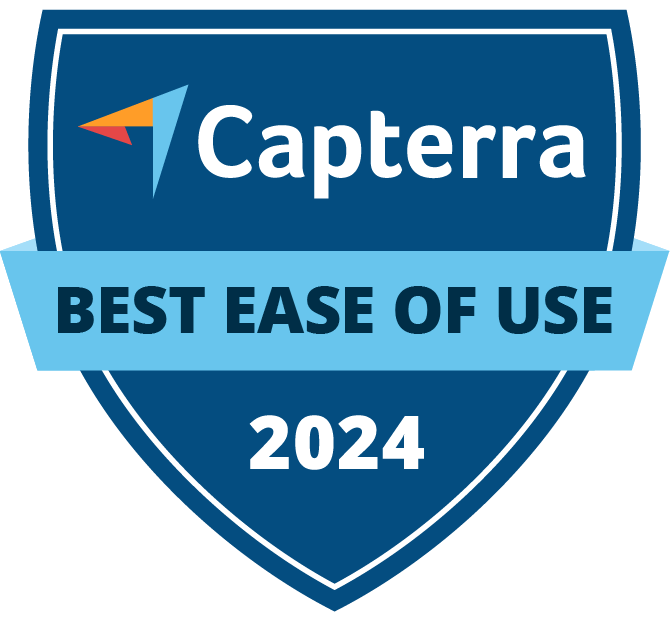TL;DR
Automate lead generation to save time and get more qualified leads without burning out your sales team. This guide walks you through essential steps to build a simple, effective, and scalable system.
– Create a solid business development strategy: Define clear goals, understand your Ideal Customer Profile (ICP), and map the customer journey.
– Ensure you can close deals: Automating lead gen is useless if your team can’t convert. Tailor pitches, develop a follow-up strategy with tools like LGM for social warming or AI Voice Messages, and foster long-term relationships.
– Use the right tools: Combine HubSpot for CRM and analytics, Clay for data enrichment, and La Growth Machine for multichannel outreach automation. LGM integrates natively with HubSpot and Clay.
– Build and refine your outreach sequence: Personalize messages, experiment with different sequences, and leverage multichannel strategies (email, LinkedIn, voice notes) to increase reply rates.
– Embrace trial and error with ICPs: Conduct A/B testing on messaging using LGM’s built-in feature, analyze data for insights, and iterate on your ICPs based on interactions and intent data.
Ready to automate your lead generation? The right tools and strategies are key. Discover actionable playbooks to streamline your outreach.
Discover PlaybooksTable of contents
When you automate lead generation, you save time and build a more consistent flow of qualified leads, without burning out your sales team.
Since there’s so many ways to go about it, it can be incredibly overwhelming and often hard to do right. This guide walks you through the essential steps to automate lead generation, helping you to build a simple, effective, and scalable system.
Step #1: Create a business development strategy
Before jumping into automation, you need to establish a solid business development strategy, or BD strategy. This strategy will ensure that your tools and processes align with your business goals.
As a part of your BD strategy, you should:
- Set clear goals: Define what you hope to achieve with automation. Maybe it’s increasing lead volume, improving lead quality, or enhancing conversion rates. Having clear objectives will help you use your time and resources wisely.

- Personalization is key: Tailor your messages to address the specific needs of each prospective customer. Personalization boosts engagement, making your audience feel understood and valued.
- Experiment with sequences: Don’t shy away from testing different outreach sequences. Regular experimentation helps you discover what resonates most with your audience and helps to refine them based on feedback and results.
- Leverage multichannel strategies: Use a mix of email, social media (LinkedIn DM, Voice notes) and calls to slowly build relationships and increase reply rate.
Step #5: Embrace trial and error with ICPs
The key to success in any business environment lies in continuously testing and adapting your strategies. Finding the right audience and crafting the perfect message doesn’t happen overnight, especially when working with your Ideal Customer Profiles (ICPs), which may need to evolve over time.
Why embracing trial and error is essential:
- Conduct A/B testing: Regularly experiment with different messaging strategies to determine what resonates best with your audience. This approach allows you to refine your tactics based on real-world feedback and results. La Growth Machine has a built-in A/B Testing feature to make the process a little easier!
- Analyze data and feedback: Use analytics to gain valuable insights into your campaigns. This helps you identify what works and what doesn’t, enabling you to make informed decisions that enhance performance.
- Iterate and optimize: It’s important to adapt your ICPs based on actual interactions. Tools like La Growth Machine’s Intent Data feature allows you to pull lists of people that have interacted (liked or commented) with a post or registered to an event (that of yours, your competitor or of a content creator.)

Get 3.5X more leads!
Are you looking to improve your sales department’s efficiency? LaGrowthMachine allows you to generate an average of 3.5x more leads, while saving an incredible amount of time on all your processes. By signing up today, you get a 14-day trial period at no cost to test our tool!
Next steps
Overall, these steps provide a solid foundation to automate lead generation. Think of this process as a strategic leap forward, not just an upgrade, but a complete reinvention of how your business connects and grows.
By merging automation with a strong BD strategy, you’re not only streamlining processes but also elevating your client interactions and scaling your operations to new heights.
Automating allows technology to take over routine tasks, freeing your team to focus on what truly matters. This combination of automation and strategy not only keeps you competitive but also strengthens your ability to engage with customers and drive growth.
Want to learn more? Watch our webinar on ‘How to Automate Lead Gen and Scale Your Business’ now. Ideal for founders, agency owners, and entrepreneurs looking to scale effectively.
- Understand your Ideal Customer Profile (ICP): Who’s your perfect customer? Developing detailed profiles of your target audience allows you to tailor your approach to meet their specific needs and behaviors. These ICPs are the cornerstone of successful lead generation as they help make sure that your message resonates with the right audiences.
- Map the customer journey: Picture your customer’s path from the first moment they hear about your business to when they become a loyal client. Understanding this journey helps you to identify key moments where automation can step in to enhance their experience and keep their engagement seamless. This insight helps you align your strategies with what customers expect and how they behave, making the whole process smoother and more effective.
Step #2: Don’t automate lead generation if…
…you can’t close the deal.
Everyone wants to be overrun with inquiries and leads, but what good is getting your ideal client’s attention if you don’t know what to say once you have it?
While automation can increase your leads, closing deals requires a well-prepared team. Ensure you have the strategies and skills necessary to convert leads into customers.
Key tactics to optimize your conversion rate:
- Tailor your pitch: Adapt your sales pitches to meet the evolving needs of your customers and fit your Ideal Customer Profile (ICP). This flexibility ensures that your messaging remains relevant and impactful by addressing specific pain points effectively.
- Develop a follow-up strategy: Avoid letting leads grow cold by implementing a structured follow-up process. This might include using LGM for Social Warming, automating timed messages or using the AI Voice Message feature to personalize your outreach and nurture relationships over time. Given that sales cycles can be lengthy, patience and persistence are essential.
- Foster long-term connections: Focus on building lasting relationships rather than just closing deals. By staying in touch with prospects, even when they’re not immediately ready to buy, you create future business opportunities. This approach helps ensure you’re not just closing deals but also setting the stage for ongoing client engagement.

Step #3: Use the right tools
Choosing the right tools is a crucial first step toward successful automation. With so many options to choose from, many businesses fall into the trap of overcomplicating the process.
Our favorite combination of HubSpot, Clay, and La Growth Machine provides a straightforward but effective solution to make your lead generation easy and effective. As a bonus, LGM is natively integrated with both HubSpot and Clay, so you’ll also avoid any compatibility issues.
The tools:
- La Growth Machine: Automates outreach across multiple channels, keeping your communication consistent and effective.
- HubSpot: Centralizes data and manages relationships with strong analytics to guide your strategies.
- Clay: Helps segment and enrich your data, ensuring your outreach hits the right notes with the right audience.
Step #4: Build and refine your outreach sequence
Creating a well-structured outreach sequence is crucial for guiding prospects through the sales funnel. But don’t overcomplicate it!
Key components of a successful outreach sequence:
- Personalization is key: Tailor your messages to address the specific needs of each prospective customer. Personalization boosts engagement, making your audience feel understood and valued.
- Experiment with sequences: Don’t shy away from testing different outreach sequences. Regular experimentation helps you discover what resonates most with your audience and helps to refine them based on feedback and results.
- Leverage multichannel strategies: Use a mix of email, social media (LinkedIn DM, Voice notes) and calls to slowly build relationships and increase reply rate.
Step #5: Embrace trial and error with ICPs
The key to success in any business environment lies in continuously testing and adapting your strategies. Finding the right audience and crafting the perfect message doesn’t happen overnight, especially when working with your Ideal Customer Profiles (ICPs), which may need to evolve over time.
Why embracing trial and error is essential:
- Conduct A/B testing: Regularly experiment with different messaging strategies to determine what resonates best with your audience. This approach allows you to refine your tactics based on real-world feedback and results. La Growth Machine has a built-in A/B Testing feature to make the process a little easier!
- Analyze data and feedback: Use analytics to gain valuable insights into your campaigns. This helps you identify what works and what doesn’t, enabling you to make informed decisions that enhance performance.
- Iterate and optimize: It’s important to adapt your ICPs based on actual interactions. Tools like La Growth Machine’s Intent Data feature allows you to pull lists of people that have interacted (liked or commented) with a post or registered to an event (that of yours, your competitor or of a content creator.)

Next steps
Overall, these steps provide a solid foundation to automate lead generation. Think of this process as a strategic leap forward, not just an upgrade, but a complete reinvention of how your business connects and grows.
By merging automation with a strong BD strategy, you’re not only streamlining processes but also elevating your client interactions and scaling your operations to new heights.
Automating allows technology to take over routine tasks, freeing your team to focus on what truly matters. This combination of automation and strategy not only keeps you competitive but also strengthens your ability to engage with customers and drive growth.
Want to learn more? Watch our webinar on ‘How to Automate Lead Gen and Scale Your Business’ now. Ideal for founders, agency owners, and entrepreneurs looking to scale effectively.











Comments